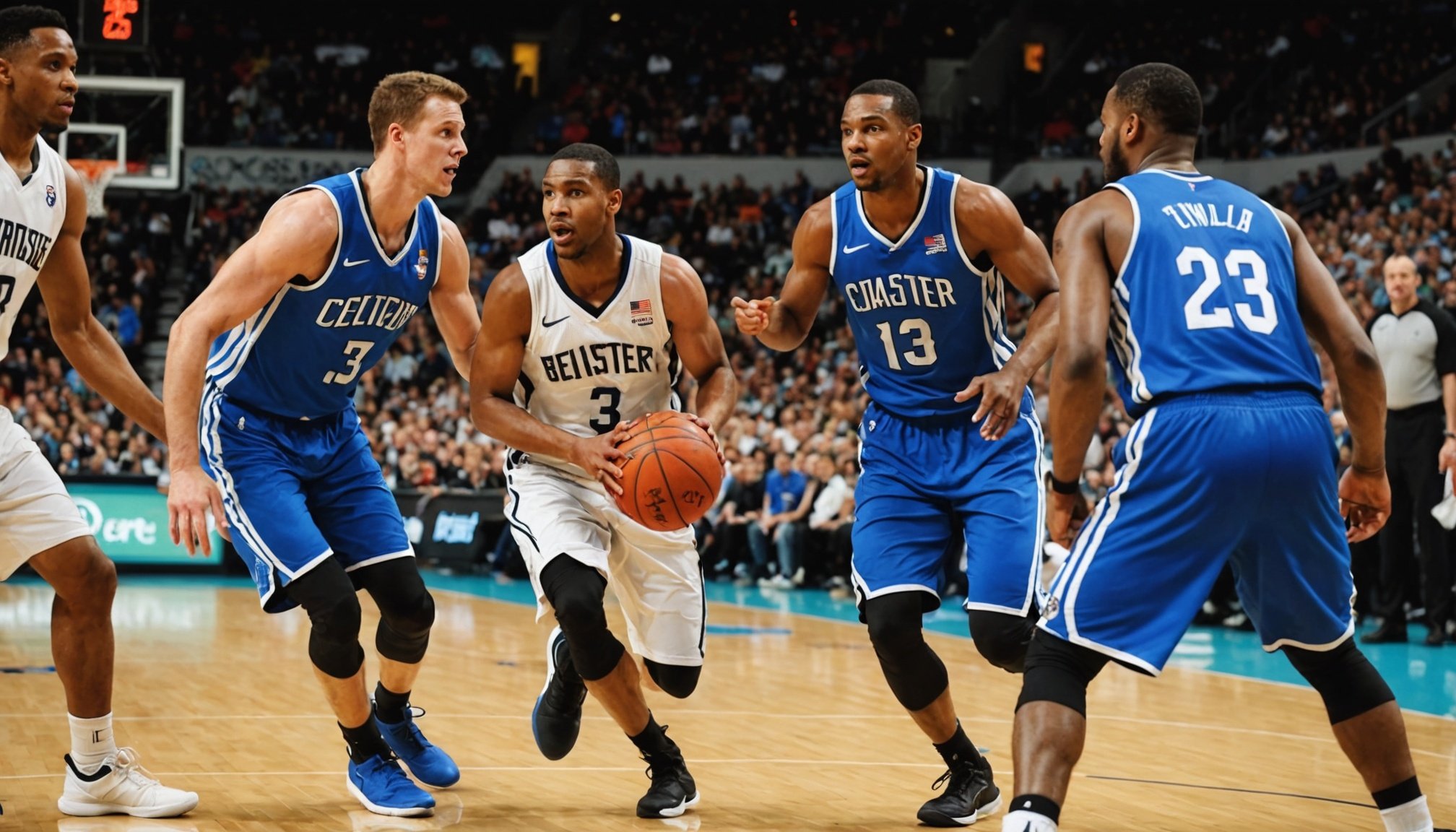Advanced Communication Techniques for Basketball Teams
Effective communication strategies are essential for boosting basketball team dynamics and enhancing performance. Clear communication within the team is pivotal to ensure all players are on the same page. Misunderstandings on the court can lead to missed opportunities and loss of momentum. Communication strategies tailored for on-court situations can often make the difference between winning and losing.
Techniques for effective on-court communication include using both verbal and non-verbal cues to quickly relay important information. Players should develop a system of simple words, signals, and gestures that can be easily recognized during the fast-paced action of a game. This technique allows teammates to interpret plays, assign roles, and adapt to the opponent’s strategy without confusion.
Topic to read : Game-Changing Basketball Shooting Drills: Elevate UK Coaches and Players to New Heights
Successful basketball teams often have a well-organized communication system. For example, a team like the Chicago Bulls during the 90s demonstrated how pivotal a well-structured communication system could be. Through consistent verbal and non-verbal strategies, they maintained top-tier game execution. This approach contributed significantly to their repeated championship victories, underscoring the critical role of communication in team success. Emphasizing team dynamics through structured communication strategies can help teams reach their full potential and achieve long-lasting success.
Enhancing Team Morale Through Communication
Fostering team morale is crucial for motivating players and elevating basketball performance. Positive communication within the team can significantly impact players’ motivation and overall dynamics. Players thrive in environments where their contributions are recognised and appreciated, boosting team spirit and encouraging optimal performance.
Also to see : Forging Unstoppable Unity: Expert Strategies to Elevate Team Synergy in UK Basketball for Court Triumph
Strategies for Building Trust
Creating an atmosphere of trust begins with inclusive communication. Encouraging every team member to voice thoughts and concerns empowers players and can strengthen the overall team dynamics. Coaches and team leaders should incorporate regular, open discussions to address any issues and ensure everyone feels valued.
Recognizing Achievements
Celebrating both individual and team successes cultivates a sense of achievement and belonging. Recognising achievements can range from verbal commendations to more formal acknowledgements. This practice reinforces positive behaviour and commitment, aligning personal ambitions with team goals.
Maintaining Open Lines of Communication
Maintaining transparency within the team promotes a culture of honesty and mutual respect. Encouraging player feedback and input allows for improved communication strategies. Coaches should make conscious efforts to receive and act upon suggestions, creating a feedback loop that enhances performance and solidifies trust. As teams adapt these techniques, they better position themselves for both immediate success and sustained accomplishments.
Proven Case Studies in Basketball Communication
Exploring case studies of basketball teams provides insights into the pivotal role of communication strategies in driving team success. Elite UK basketball teams, such as the Sheffield Sharks, have employed sophisticated communication systems to elevate their performance. An analysis reveals that teams with structured communication dynamics, comprising both verbal and non-verbal elements, tend to excel consistently in championships.
Key Takeaways from Championship-Winning Team Dynamics
Championship-winning teams often exhibit exceptional team dynamics, underpinned by robust communication frameworks. These teams prioritize clarity and efficiency in their communication, ensuring all players are aligned with the team’s objectives. For instance, consistent use of simple signals can reduce the risk of in-game misunderstandings, thereby maximising performance.
Statistical Evidence Linking Communication to Performance Outcomes
Recently conducted studies highlight a clear correlation between effective team communication and enhanced basketball performance. Data showcases that teams employing comprehensive communication methods witness improved basketball performance through reduced errors and increased strategic flexibility. Evidence suggests that teams committing to developing these communication skills often secure superior standings, reaffirming the importance of strategic communication in competitive environments. These findings accentuate that investing in communication strategies is indispensable for basketball teams aiming for excellence.
Effective Coaching Communication Styles
Effective coaching communication styles can significantly enhance team performance. Tailored communication, focusing on empathy and feedback, fosters better player-coach connections.
Adapting Communication to Player Needs
Coaches play a crucial role in adapting communication strategies to address the unique needs of each player. This personalized approach allows for better understanding and addresses the specific strengths and weaknesses of players. By recognizing individual player dynamics, coaches can efficiently tailor their strategies to improve overall team cohesion. Empathy also plays a vital role, allowing players to feel understood and supported, boosting their motivation and commitment.
The Role of Emotional Intelligence in Coaching
Emotional intelligence is indispensable in effective coaching. Coaches with high emotional intelligence can read the emotional cues of players and respond appropriately, handling conflicts and fostering a positive team atmosphere. This leads to better relationships and increased trust between coaches and players, facilitating open communication and improving basketball performance.
Leveraging Feedback for Improvement
Impactful feedback is an essential tool for player development. Coaches should structure feedback sessions to be constructive and motivational, considering the personality and learning style of each player. Regular, well-delivered feedback not only boosts confidence but also aligns personal growth with the team’s strategic objectives, creating an environment conducive to excellence.
Visual and Verbal Communication in Practice
In basketball, leveraging both visual aids and verbal communication is crucial for conveying complex play instructions and strategies efficiently. Coaches and players alike can benefit from incorporating visual tools such as diagrams and digital playbooks to facilitate better understanding of their communication strategies. These aids help in simplifying intricate plays, making them accessible and actionable for all team members.
Utilizing Visual Aids to Enhance Play Understanding
Visual aids, including whiteboards and tactical animations, serve a significant role in demonstrating strategic moves and positioning. By providing a clear visual representation, these tools reinforce verbal instructions and allow players to visually map out their on-court responsibilities. This dual approach of visual and verbal explanation ensures consistency in basketball performance.
Role of Non-Verbal Cues in Team Interactions
Non-verbal cues, such as hand signals and eye contact, are pivotal in maintaining seamless on-court team dynamics. These cues enable quick exchanges of information without disrupting the game flow, allowing players to subtly adjust tactics in real-time. Mastery of non-verbal communication enhances cohesion and minimizes misunderstandings.
Examples of Successful Instructional Methods in Basketball Coaching
Successful basketball coaching often combines verbal explanations with practical, visual demonstrations. Innovative coaches utilise methods like walkthroughs paired with visual aids, followed by live simulations to reinforce learning. This comprehensive teaching style promotes effective communication strategies, catering to diverse player learning styles.
Integrating Technology in Basketball Communication
Incorporating technology integration into basketball communication offers a modern approach to enhancing team dynamics and performance. Various communication tools and platforms have been tailored to support teams in achieving seamless interaction and strategy refinement.
Using Analytics to Inform Communication Strategy
Analytics play a crucial role in crafting effective communication strategies by providing objective insights into team performance. By analysing data points such as player movements and game statistics, coaches can make data-driven decisions to improve communication. This ensures that communication strategies are grounded in factual analysis, increasing the precision and relevance of interactions.
Team Communication Apps and Platforms
Modern communication apps and platforms are designed to facilitate streamlined interaction among team members. These tools enable real-time messaging and scheduling, ensuring that all players and coaches are consistently updated. Utilising such platforms improves clarity and accessibility of information, strengthening overall communication tools usage.
Video Analysis for Improved Team Feedback
Leveraging video reviews helps teams to perform detailed game assessments, allowing players to visually understand areas for improvement. By replaying game footage, teams can engage in in-depth discussions about tactics and individual performances. Video analysis thus solidifies feedback loops, making performance analysis more tangible and effective.




